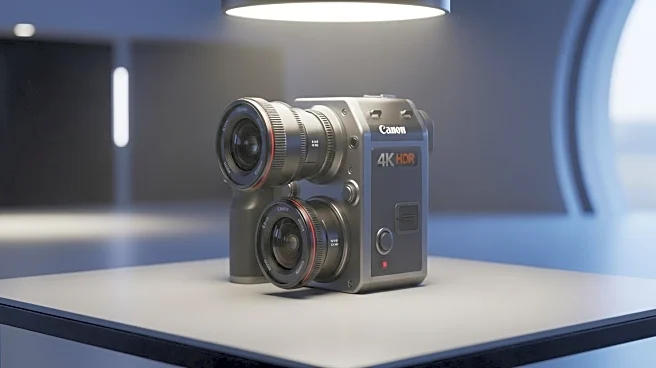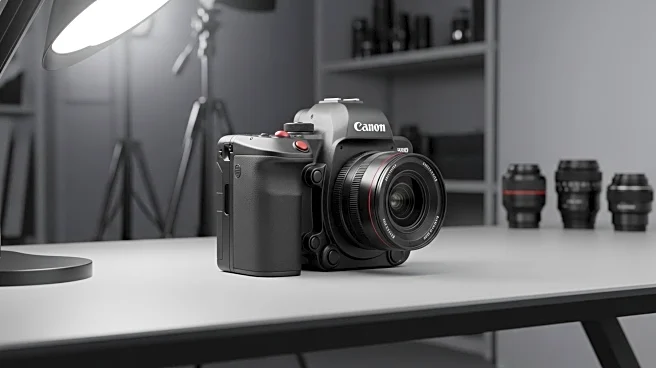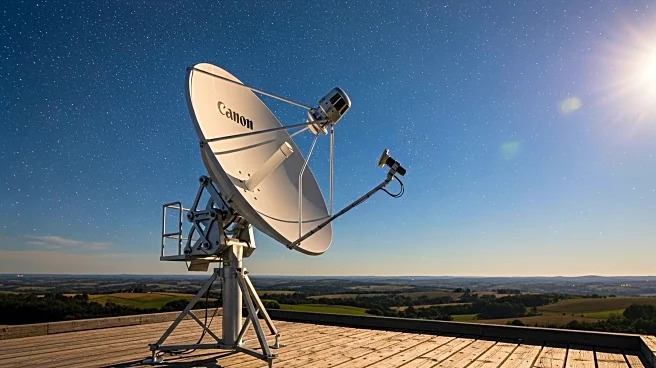What is the story about?
What's Happening?
Canon has introduced the EOS C50, its smallest cinema camera designed to cater to both social media creators and professional filmmakers. The camera features an RF mirrorless mount and a new full-frame sensor capable of 7K 60p internal RAW recording and 32MP photo capture. Despite its compact size and lightweight design, the EOS C50 is equipped with advanced features such as a dual ISO system for enhanced low-light performance, 12-bit Cinema RAW Light recording, and simultaneous crop recording for social media formats. The camera also includes professional features like XLR audio inputs, Dual Pixel autofocus, and AI subject tracking. Canon has also launched the RF 85mm F/1.4 L VCM Hybrid Lens and updated the PowerShot Elph 360 HS A.
Why It's Important?
The introduction of the EOS C50 marks a significant advancement in Canon's cinema camera lineup, offering a versatile tool for creators who require high-quality video and photo capabilities in a compact form. This camera is particularly beneficial for social media influencers and filmmakers who need to produce content across multiple platforms without compromising on quality. The dual video format capability allows creators to efficiently produce content for platforms like YouTube, Instagram, and TikTok simultaneously. The camera's advanced features, such as AI subject tracking and dual ISO, enhance its usability in various shooting conditions, making it a valuable asset for both amateur and professional filmmakers.
What's Next?
Canon plans to ship the EOS C50 towards the end of Q4 2025, with the RF 85mm F/1.4 L VCM lens arriving this month. The PowerShot Elph 360 HS A will be available in October 2025. As the camera becomes available, it is expected to attract a wide range of users from social media creators to professional filmmakers, potentially influencing the market dynamics in the cinema camera industry. Canon's focus on hybrid capabilities and compact design may set new standards for future camera developments.
AI Generated Content
Do you find this article useful?














